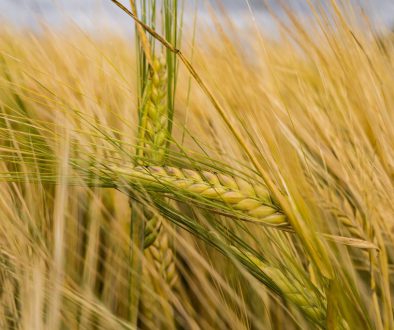RE: Blockades Rail Service Disruption
Dear Ministers: Protests across Canada are blockading rail infrastructure and are creating instability in Canada’s transport system. For example, CN Rail has announced it would be shutting down significant portions of its rail network.
As a consequence, grain and food processors, including major domestic and international flour mills and bakers, will not be able to sustain operations if the situation continues. This directly impacts value added processing, jobs, and consumers who depend on consistent supply chains.
Rail service for Canadian wheat, barley and other grain shipments is critical to meeting demand from our domestic and export customers. The livelihoods of the entire value chain, including Canadian farmers, depend on Canada’s ability to deliver product efficiently and on time. Past service disruptions have caused significant damage to Canada’s reputation as a reliable grain supplier.
The impact of rail service disruptions is significant. In a normal commercial environment, customers whose suppliers face disruptions have the option of moving their business to other providers. However, farmers and grain shippers do not have that option – they are captive to rail and most often captive to a single carrier.
Farmers will not be able to market their crops and will not receive their expected cash flow, cash flow that is needed to run their businesses and support their families. The inability to sell their crops will compound the marketing difficulties farmers are already facing due to one of the most difficult harvest seasons in memory, alongside a myriad of trade and market access challenges.
If the disruption continues, grain exporters will face significant demurrage costs and contract penalties as the lack of rail service will prevent them from meeting their contractual obligations in export markets. The blockages impact the movement of grain to Western ports, as well as our ability to service domestic and international markets through eastern routes. For example, Bimbo Canada, Canada’s largest manufacturer of bread may run out flour.
The negative impact on the Canadian grains, oilseeds and specialty crops industry will have extended repercussions on jobs and the Canadian economy. Rail service disruption will also impact the reputation of the Canadian brand in wheat, barley and other grain export markets.
Reliability is a key component of the Canadian brand for crop commodities. Canada markets grain to over 75 countries every year. Questions from major customers about our logistics system and our ability to meet contractual obligations within these markets are being raised. Suppliers are now are facing direct concerns about Canada’s ability to service contracts.
The rail disruption is affecting farmers in all parts of Canada. Quebec and Ontario farmers will be impacted because the propane needed to run their operations will not be delivered. Restoring the supply of propane Quebec and Ontario farm businesses, must be an urgent priority for the Government of Canada. Cereals Canada and Barley Council of Canada call upon you to lead the Government’s efforts to ensure that the protests that are causing rail disruption is ended.
We request that there is immediate and cooperative action taken by all relevant Government arms to enforce the judgement the railways have received to remove the protestors from blocking the rail lines.
We also ask that the government immediately make public the fact that it is prepared to take these actions to ensure the continuation of railway operations. The movement of grain, oilseed and special crops by rail is of such importance to the Canadian economy that it cannot be repeatedly disrupted.
Long-term action also is needed to ensure that the threat of rail stoppages do not keep happening. Actual or threatened rail disruptions occur regularly, causing needless uncertainty in the entire value chain.
Canada’s reputation of providing a reliable supply of high-quality grains to international markets is at risk. Canadian farmers and exporters are depending upon your action.
Sincerely,





